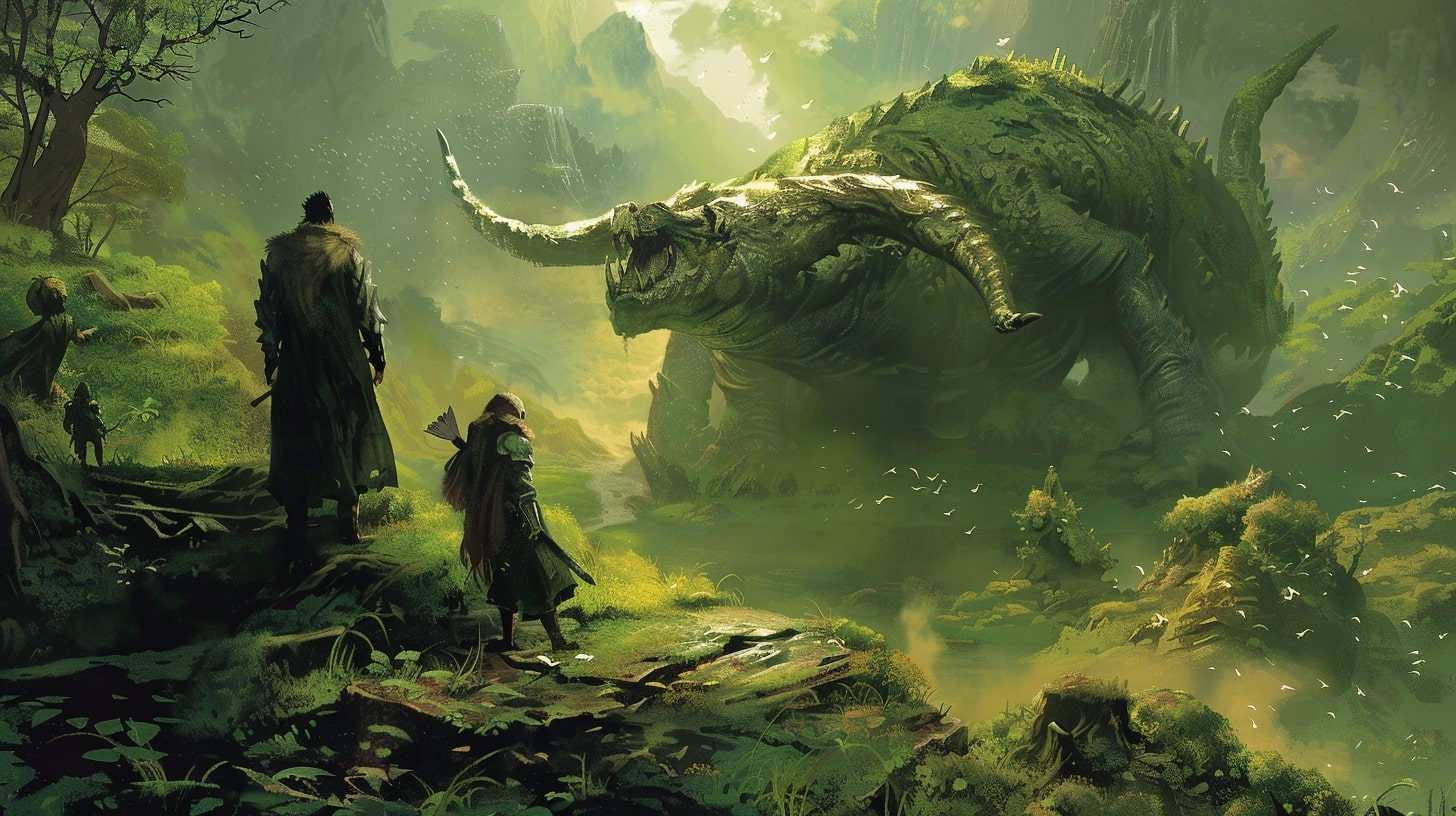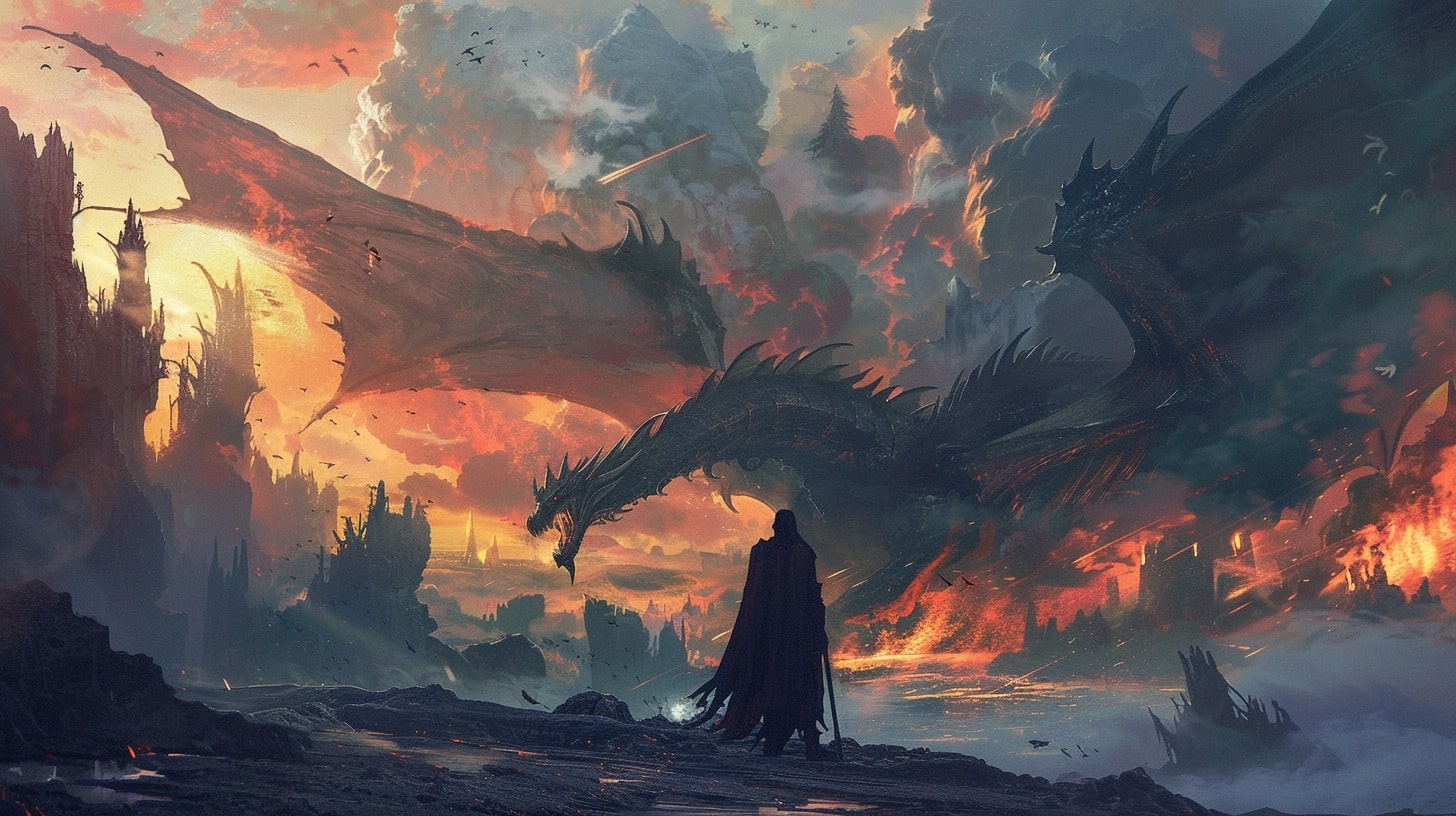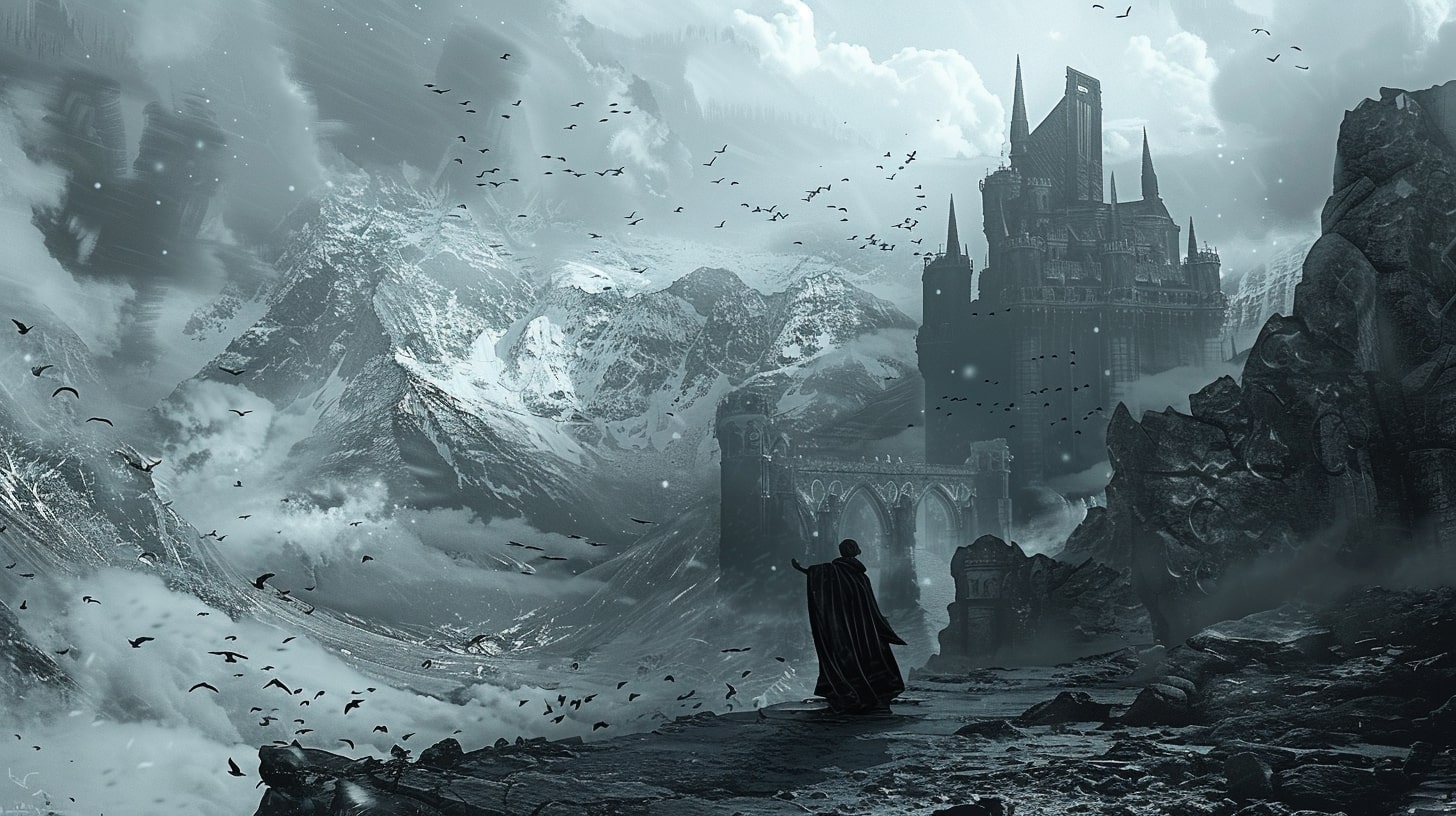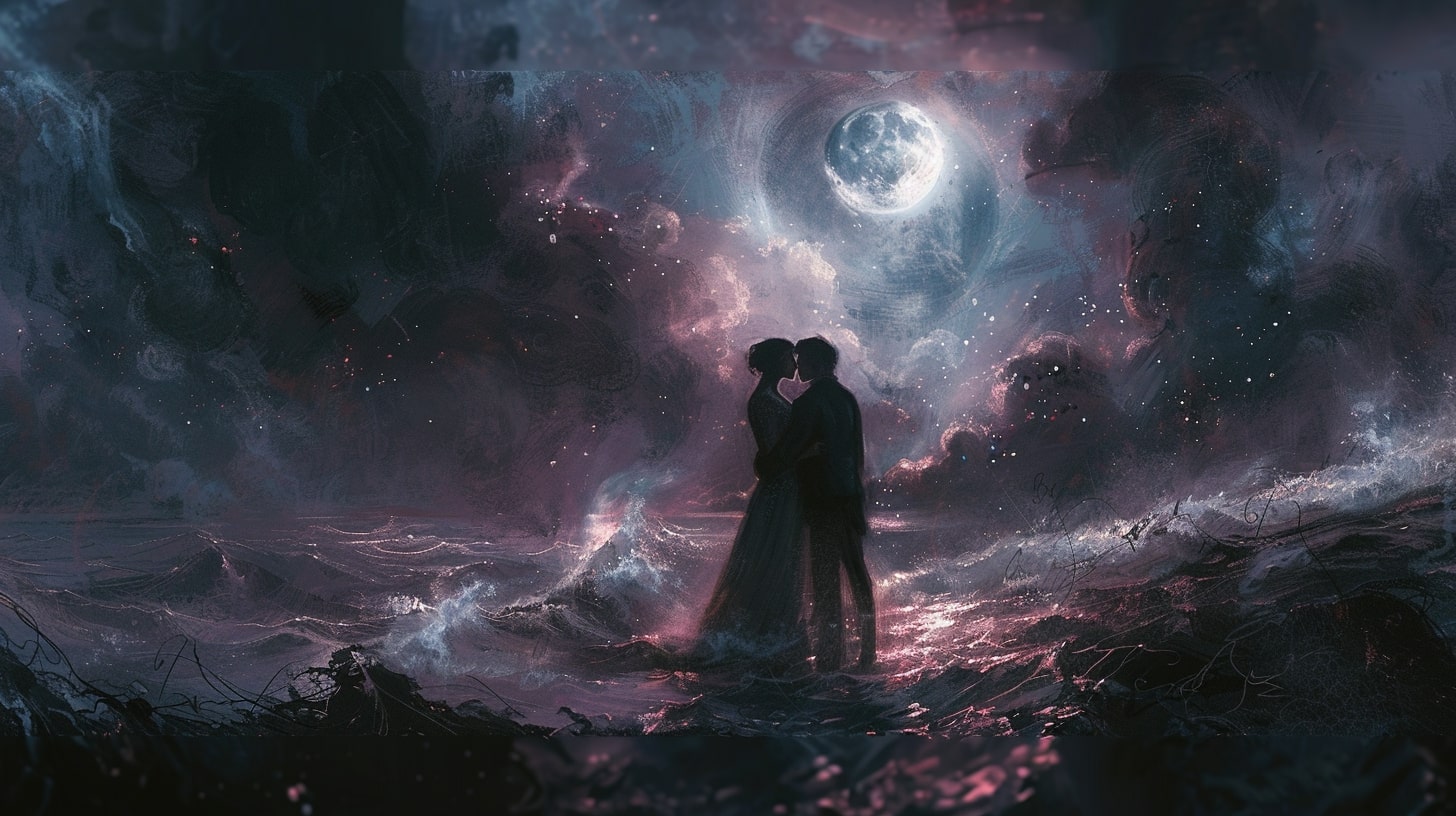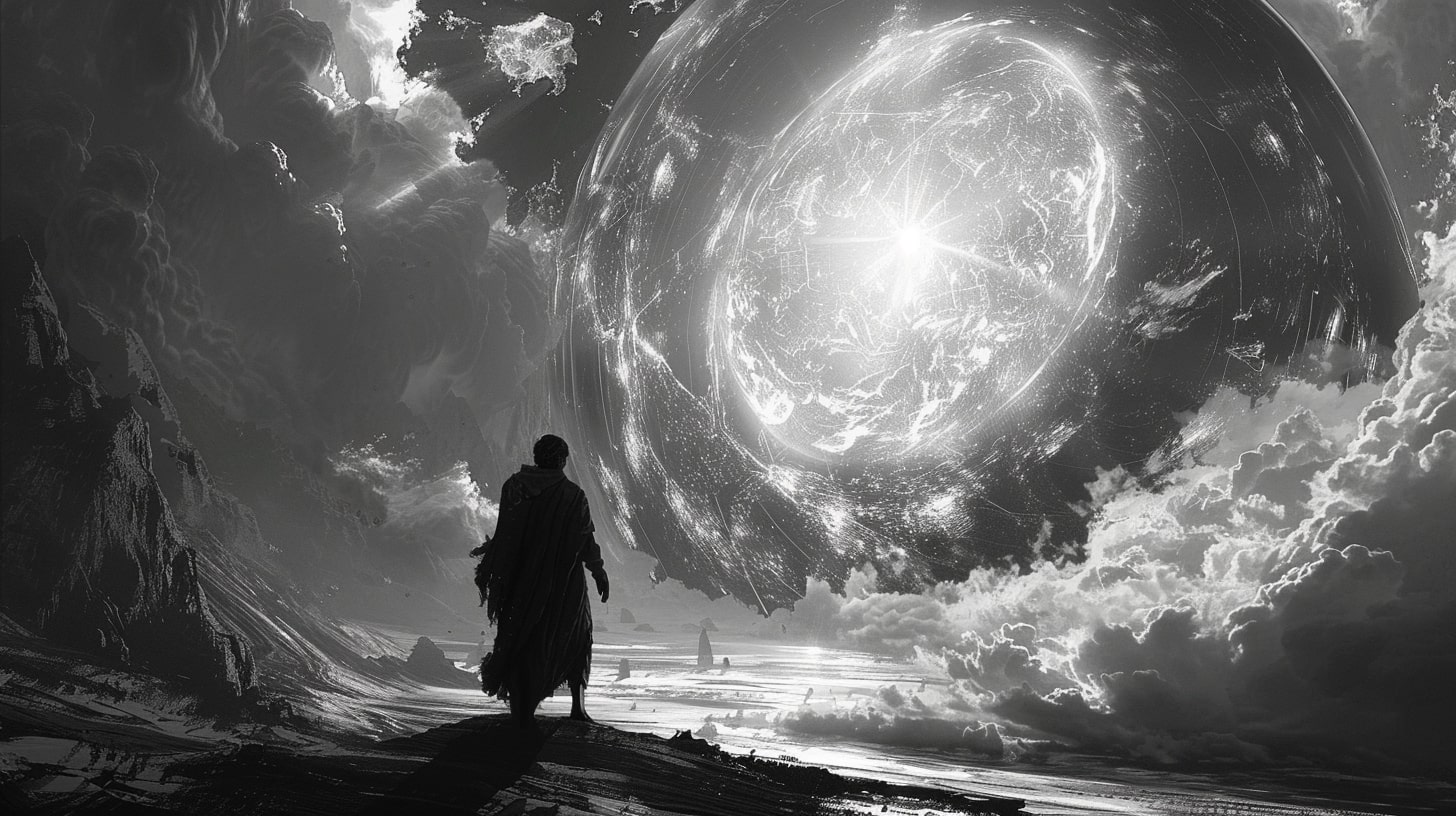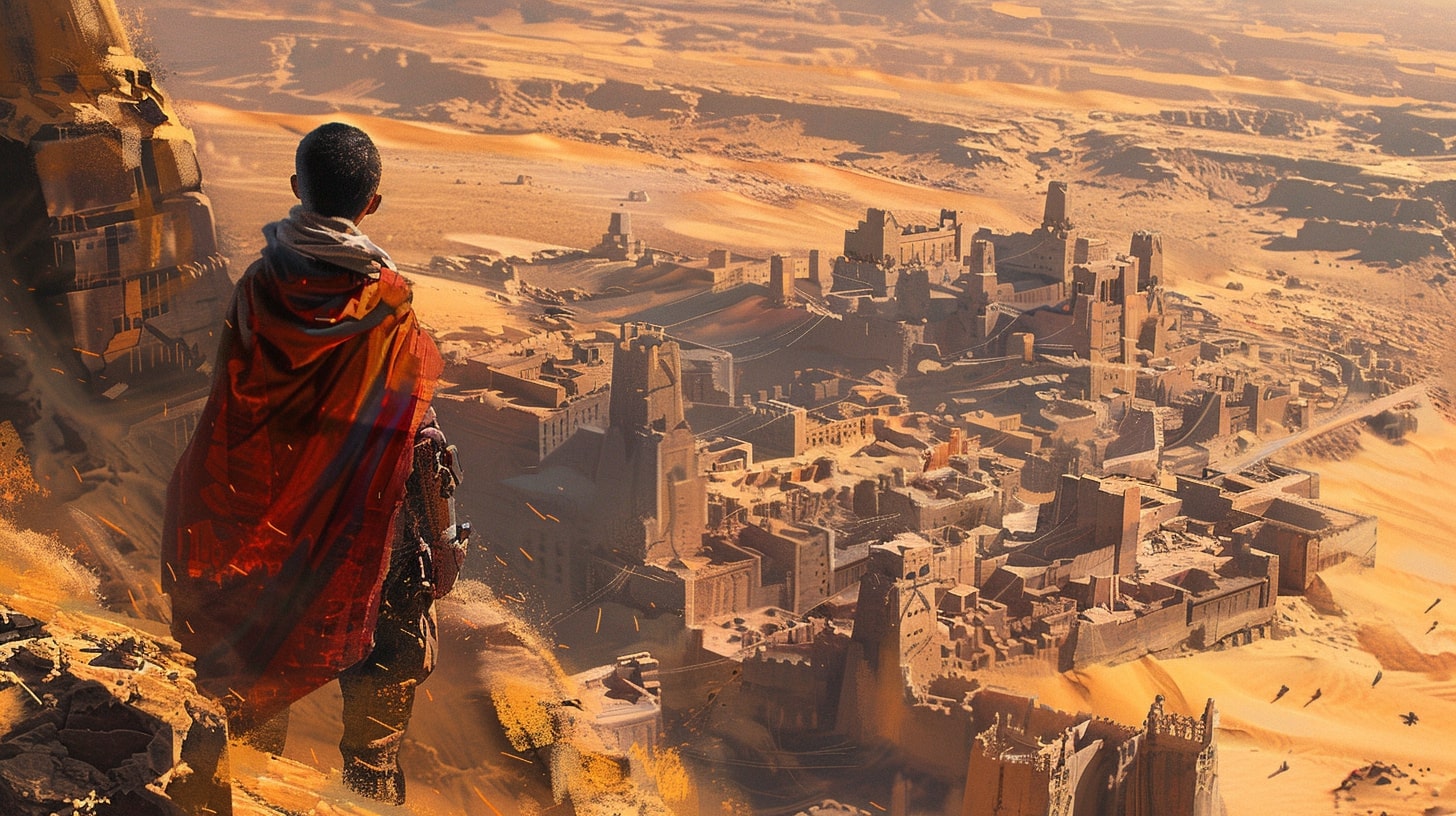Dive into the Apocalyptic World
If you find yourself drawn to the allure of apocalyptic scenarios and want to explore the art of writing apocalyptic fiction, you've come to the right place. This genre allows you to create captivating stories set in worlds on the brink of destruction.
I think that is what makes it so fascinating for fantasy writing because it's possible to imagine the world existing. It's just in the future. When writing high-fantasy you're creating a world that can't possibly exist, but a post-apocalyptic world? That feels like it's just around the corner.
But how do you pull this off? Let's explore it some.
What is Apocalyptic Fiction?
Apocalyptic fiction is a subgenre of speculative fiction that focuses on the aftermath of a catastrophic event that leads to the collapse of civilization as we know it. These stories often feature themes of survival, exploration of human nature under extreme circumstances, and the quest for hope in dire situations. Apocalyptic fiction encompasses a wide range of settings, from natural disasters and pandemics to alien invasions and technological catastrophes.
By immersing yourself in this genre, you have the incredible opportunity to craft compelling narratives that explore the resilience of humanity and confront existential questions. Whether you want to create a thrilling tale of survival or a thought-provoking exploration of the human condition, apocalyptic fiction provides a rich canvas for your imagination.
Why Write Apocalyptic Fiction?
Writing apocalyptic fiction offers a unique blend of creative freedom and social commentary. It allows you to examine the human experience in extraordinary circumstances while addressing current societal concerns. Through your storytelling, you can explore themes such as the consequences of environmental degradation, the impact of technology on society, or the fragile nature of civilization.
Additionally, apocalyptic fiction provides a platform to examine the complexities of human relationships and character development. As your characters navigate the challenges of a post-apocalyptic world, they can grow, adapt, and confront their own strengths and weaknesses. This genre offers the opportunity to create multi-dimensional characters who face extraordinary circumstances and evolve through their experiences.
By writing apocalyptic fiction, you have the power to captivate readers and transport them to a world that is both familiar and foreign. Your stories can inspire, entertain, and provoke thought, inviting readers to contemplate the resilience of humanity and the choices we make in the face of adversity.
Now that you understand the essence of apocalyptic fiction and its appeal, it's time to dive deeper into the process of crafting your own apocalyptic world. Let's explore how to imagine the catastrophe and establish the setting in the next section: Crafting Your Apocalyptic World.

Writing Apocalyptic Fiction: Crafting Your Apocalyptic World
To create an engaging apocalyptic fiction story, you must carefully craft the world in which your characters will navigate. This involves imagining the catastrophe that sets the stage for your story and establishing the setting in which the events will unfold.
Worldbuilding is just as important as the story that you create when working with this genre.
Imagining the Catastrophe
The first step in crafting your apocalyptic world is to imagine the catastrophic event that leads to the downfall of society. This event can take many forms, such as a viral outbreak, natural disaster, technological collapse, or even a zombie apocalypse. The key is to choose a catastrophe that aligns with your story's themes and provides ample opportunities for conflict, tension, and exploration of human nature.
Consider the causes and aftermath of the catastrophe. What are the immediate and long-term effects on the world? How does it impact the environment, infrastructure, and social structures? How do people adapt and survive? By answering these questions, you can create a vivid and believable apocalyptic backdrop for your story.
Establishing the Setting
Once you have determined the nature of the catastrophe, it's time to establish the setting of your apocalyptic world. This involves creating a detailed and immersive environment that reflects the aftermath of the catastrophe.
When establishing the setting, consider the following elements:
Time and place: Decide when and where your story takes place. Is it set in a post-apocalyptic future or in the immediate aftermath of the catastrophe? Is it a global or localized event? These details will shape the overall atmosphere and context of your story.
Physical landscape: Describe the physical landscape of your apocalyptic world. Are there vast wastelands, crumbling cities, or overgrown forests? How do these elements contribute to the overall mood and challenges faced by your characters?
Societal structures: Explore how society has changed in the wake of the catastrophe. Are there new forms of governance, factions, or power struggles? How do people organize themselves, and what are the social dynamics at play?
Resources and scarcity: Consider the availability of resources in your apocalyptic world. Are there shortages of food, water, or fuel? How do characters navigate these scarcities and what impact does it have on their daily lives?
Survival challenges: Think about the specific challenges your characters will face in this setting. Are there hostile creatures, dangerous environments, or rival factions? How do these challenges test the resilience and ingenuity of your characters?
By carefully crafting the catastrophe and establishing the setting, you lay the foundation for a compelling apocalyptic world. Don't be afraid to draw inspiration from real-life disasters and incorporate scientific and technological elements to add authenticity to your story. Remember, the key is to create a world that captivates your readers and brings your apocalyptic vision to life.

Developing Characters
In the realm of apocalyptic fiction, well-developed characters can make all the difference in creating a compelling and immersive story. As you embark on your journey of writing apocalyptic fiction, it's important to pay close attention to creating protagonists and antagonists and exploring character motivations.
Creating Protagonists and Antagonists
The protagonists in your apocalyptic story will be the driving force behind the narrative. These are the characters that your readers will root for and connect with emotionally. When creating your protagonists, consider their backgrounds, strengths, weaknesses, and how they adapt to the challenges of the post-apocalyptic world.
It's important to ensure that your protagonists are relatable and well-rounded. Give them goals, desires, and internal conflicts that readers can easily empathize with. This will help to create a deep emotional connection between the readers and your characters.
On the other hand, the antagonists in your story will pose obstacles and conflicts for your protagonists to overcome. Antagonists can take various forms, such as rival survivors, power-hungry leaders, or even the apocalyptic environment itself. By creating complex and multi-dimensional antagonists, you can add depth and tension to your story.
Remember that both protagonists and antagonists should have their own motivations, fears, and flaws. This will make them more realistic and enhance the conflicts and dynamics within your narrative. By developing well-rounded characters on both sides, you can create a more engaging and nuanced apocalyptic world.
Exploring Character Motivations
Character motivations are essential in driving the plot forward and shaping the actions of your protagonists and antagonists. In the context of apocalyptic fiction, motivations can be rooted in survival, protecting loved ones, seeking redemption, or even gaining power in a world void of structure.
To ensure that your characters' motivations are believable and resonate with readers, ask yourself the following questions:
- What drives your characters to keep going in the face of overwhelming challenges?
- How do their past experiences and personal beliefs shape their motivations?
- Are their motivations influenced by the catastrophic event itself?
- Do their motivations change or evolve as the story progresses?
By delving deep into the motivations of your characters, you can create a more authentic and compelling narrative. This will not only captivate your readers but also add layers of complexity to your apocalyptic world.
When developing characters in your apocalyptic fiction, remember to maintain consistency and continuity throughout the story. A well-crafted cast of characters with believable motivations and conflicts can elevate your apocalyptic tale and keep readers engrossed until the very end.
For more insights into writing captivating fiction, check out our articles on developing fantasy characters and crafting sci-fi plots.

Plotting the Apocalypse
In the realm of apocalyptic fiction, the plot plays a vital role in captivating readers and immersing them in a world ravaged by catastrophe. When crafting your apocalyptic story, it's important to consider both the choice of the catastrophic event and the structure of the narrative.
Choosing the Catastrophic Event
The catastrophic event serves as the catalyst for the apocalyptic world you are creating. It can take various forms, such as natural disasters, pandemics, technological failures, or even supernatural phenomena. The choice of the catastrophic event will shape the entire narrative and determine the challenges your characters will face.
Consider the genre of your story and the themes you want to explore. Are you leaning more towards a post-nuclear wasteland, a zombie apocalypse, or a world devastated by climate change? Each event brings its own set of consequences and possibilities. Strive for originality while also considering the interests of your target audience.
To make your story more compelling, it's essential to research real-life disasters and draw inspiration from them. This will help you create a believable and immersive apocalyptic world. For more information on incorporating realism into your fiction, take a look at our article on writing post-apocalyptic fiction.
Structuring the Narrative
Once you've chosen the catastrophic event, it's time to structure your narrative. Apocalyptic fiction often follows a pattern of destruction, survival, and the pursuit of hope. Here are some key elements to consider when structuring your story:
Introduction: Begin by establishing the pre-apocalyptic world and introducing your main characters. This builds a connection between readers and the characters, making them emotionally invested in their survival.
Catastrophe: The catastrophic event occurs, plunging the world into chaos. Portray the impact and devastation caused by the event, creating a sense of urgency and danger.
Survival: Your characters must navigate the new world, facing challenges, threats, and conflicts. Highlight their resourcefulness, resilience, and determination to survive.
Character Development: As the story progresses, delve deeper into your characters' emotions, motivations, and growth. Show how the apocalyptic world shapes them and their relationships.
Hope and Redemption: While the world may seem bleak, it's important to incorporate elements of hope, resilience, and redemption. This can come in the form of small victories, acts of kindness, or the discovery of a potential solution.
Remember, the pacing of your narrative is crucial in maintaining reader engagement. Balance moments of intense action and suspense with quieter, introspective scenes. This will allow readers to catch their breath and connect with the characters on a deeper level.
By effectively choosing the catastrophic event and structuring your narrative, you can create a compelling and unforgettable apocalyptic story. Don't be afraid to experiment, challenge conventions, and explore the human condition in the face of adversity.
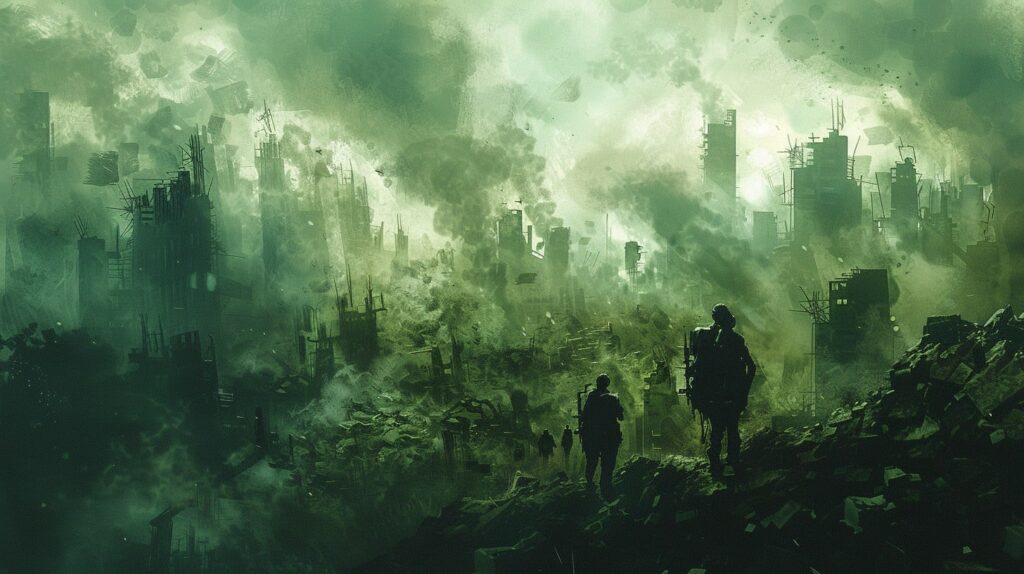
Elements of Apocalyptic Fiction
In order to create a compelling and engaging apocalyptic fiction, there are certain elements that you should consider. These elements help shape the overall tone, themes, and emotional impact of your story. Two important elements to focus on are themes and messages and balancing action and emotion.
Themes and Messages
Apocalyptic fiction often explores themes that resonate with readers on a deeper level. These themes can vary widely, but some common ones include survival, hope, humanity, resilience, and the consequences of human actions. When writing your apocalyptic fiction, think about the underlying messages you want to convey and the themes you want to explore. These themes and messages can add depth and meaning to your story, making it more impactful for readers.
For example, your story could explore the theme of the indomitable human spirit in the face of adversity. Through your characters' struggles and triumphs, you can convey the message that even in the darkest times, there is always hope. The themes and messages you choose will depend on your personal vision for the story and the ideas you want to explore.
Balancing Action and Emotion
Apocalyptic fiction often involves high-stakes action and intense moments of danger and excitement. However, it's important to balance these action-packed scenes with moments of emotional depth and character development. This balance allows readers to connect with the characters on a more personal level and invest in their journey.
Integrating emotional moments into your story can be achieved through moments of vulnerability, personal growth, and relationships among the characters. These emotional arcs can create a sense of empathy and connection, making the apocalyptic world feel more real and relatable.
Remember, the key is to strike a balance between action and emotion. Too much action without emotional depth can lead to a superficial reading experience, while too much emotion without action can slow down the pacing of the story. Find the right balance that suits your narrative and engages your readers.
By carefully considering the themes and messages you want to convey and balancing action and emotion, you can create an apocalyptic fiction that captivates your readers and leaves a lasting impact. Remember to explore other articles on the art of writing fiction, such as how to write fantasy novels and crafting sci-fi plots, to further enhance your storytelling skills. Happy writing!
Research and Authenticity
To create a compelling and authentic apocalyptic fiction, research plays a vital role in providing a solid foundation for your storytelling. By studying real-life disasters and incorporating scientific and technological elements, you can enhance the believability and impact of your narrative.
Studying Real-Life Disasters
Immersing yourself in the study of real-life disasters can provide valuable insights and inspiration for your apocalyptic fiction. Explore historical events, such as natural disasters, pandemics, or major societal upheavals. By delving into the causes, consequences, and human experiences associated with these events, you can gain a deeper understanding of the complexities and challenges that arise in times of catastrophe.
Consider researching specific elements such as survival strategies, the psychological impact on individuals and communities, and the societal and political responses to disaster situations. This research will enable you to create a more authentic and nuanced portrayal of your characters' experiences and the world they inhabit.
Incorporating Scientific and Technological Elements
To add depth and realism to your apocalyptic world, it's essential to incorporate scientific and technological elements. Consider exploring scientific theories, advancements, and concepts that can inform your narrative. For example, you might research emerging technologies, alternative energy sources, or medical breakthroughs that could shape the post-apocalyptic landscape.
Incorporate these elements into your storytelling to create a believable and immersive world. Whether it's advanced weaponry, futuristic communication systems, or innovative survival techniques, integrating scientific and technological details can enhance the plausibility of your apocalyptic fiction.
Remember to strike a balance between incorporating scientific and technological elements and maintaining the overall narrative flow. While these elements can add depth and intrigue, they should not overshadow character development and thematic exploration.
By studying real-life disasters and incorporating scientific and technological elements, you can infuse your apocalyptic fiction with authenticity and captivate readers with a sense of believability. Research serves as a powerful tool to inform your storytelling choices and ensure that your apocalyptic world resonates with readers. So, dive into the realm of research, gather knowledge, and let your creativity flourish in crafting a compelling apocalyptic narrative.






